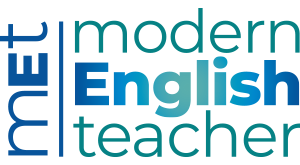There is so much tied up in pronunciation. When we choose to correct someone’s pronunciation, are we taking a tiny chisel to their accent – one sound at a time? Are we moving towards one standard, globally understood English? Are we imposing a prestige model of pronunciation on them, like received pronunciation (RP)? Our accents tell our story, they are part of our identity. How we speak is so incredibly personal. With this in mind, we thought we’d begin a little differently this time and take a moment for some personal reflections on our relationship with the teaching of pronunciation.
David: ‘I’ve had an interesting journey when it comes to pronunciation. From the very beginning I was overwhelmed by the phonemic chart. It was only later that I learnt about prestige models of pronunciation and realised one of the reasons I’d struggled was because I didn’t make all the same vowel sounds. So, from the outset, pronunciation was something I avoided teaching in any meaningful way. Later I grew to love it and almost overcompensated by teaching it all the time. All of this means that these days I have quite an open and honest approach to pronunciation. Pronunciation is incredibly personal and my job as a teacher is to help learners find pronunciation that they are comfortable with.’
Mark: ‘Unlike David, I suppose I have something more like what used to be called RP or at least a version of it in the classroom. Like David, at the beginning of my teaching career I too avoided teaching pronunciation. I didn’t understand it from a shapes and sounds perspective and so just pretended it didn’t exist. After being observed and challenged on it, I started to put little bits of it into my teaching but, even then, it was more a token gesture. For me, the turning point was in shifting my perception of pronunciation being a productive skill, to seeing it as integral to listening. It is within this frame that I felt I was finally able to make it a useful integrated part of my lessons.’
So, while we may have come to it from different angles, we’ve both arrived at the same approach to teaching pronunciation. We want to move away from these paradigms of ‘correct’ pronunciations and instead focus on intelligibility and choice. We believe in taking a little-and-often approach, weaving pronunciation into every aspect of our teaching, from grammar to vocabulary and everything in between. Here are two of our favourite ways of weaving it in.
Intonation
Intonation is so incredibly important in English as it carries our tone, our meaning. The slightest of changes to intonation can change the whole sentence. It can, however, be challenging to teach. Do arrows marking rising-falling intonation really help a learner to express themselves more richly? Our approach is to play with intonation throughout the lesson. We tend to choose a sentence in a listening or reading and ask learners how they would say this. Then we ask them to move the stress to a different word and experiment with how it came across or how it changed the meaning. We like to ask learners to say the same sentence but express frustration or interest. Gradually we co-create an understanding of its importance and flexibility. A classic and very easy activity is examining how we say ‘thank you’.
Receptive pronunciation
Connected speech is an incredibly interesting aspect of English pronunciation but at times problematic. We’ve both been influenced by Richard Cauldwell’s (2013) work and his greenhouse, garden and jungle metaphor. However, over the years we’ve had learners push back against it, saying they want to speak ‘proper’ English and not street English or slang. This pushback is completely understandable as it challenges how they’ve always spoken English. The reality, however, is that connected speech is not just about pronunciation, it’s about knowing what’s possible. Our approach is to teach it to our learners as fast speech, focusing not on its production but on comprehension. Learners can choose if they want to adopt it, but either way, the more they know is possible, the better chance they have of decoding it when they come across it. If this is new to you, a good place to start is by discussing the possible pronunciations of grammatical chunks that feature in lessons and are often heavily reduced in speech. Take the constructions ‘Do you mind if I . . . ?’ or ‘If I were you,’ and consider the many wonderful ways they can be pronounced in fast speech.
In order to embed these two aspects into our lessons, we moved away from the idea of a set lesson devoted to pronunciation and moved instead to the idea of these being micro-activities strategically placed so that it becomes an embedded part of every lesson. This allows us to engage our learners in a dialogue that moves beyond right or wrong, focusing instead on what’s possible and how the speaker wants to sound. To see this approach in action and learn how you can apply it to your own teaching, check out our example lesson.
Check out our pronunciation lesson in Resources online at:
https://pavilionelt.com/wp-content/uploads/MET-34.3-Pronunciation-Lesson-HRP.pdf



